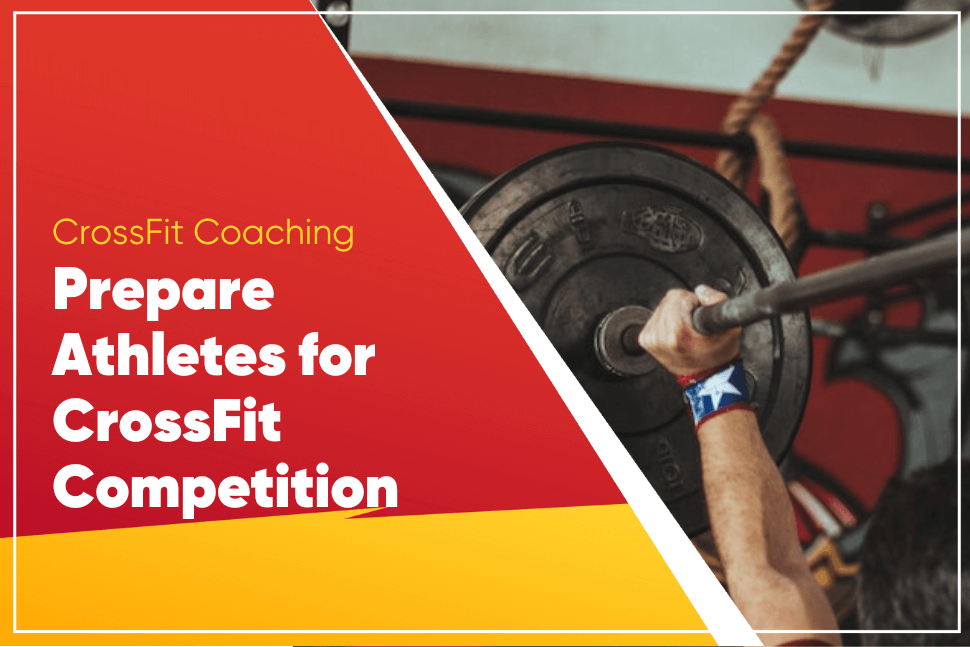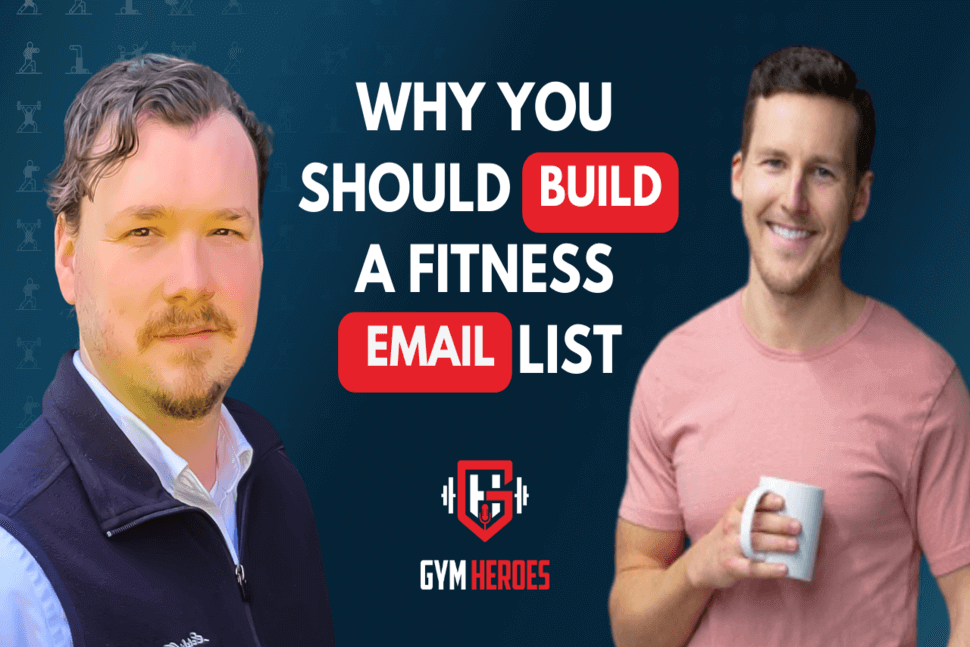As a CrossFit Coach, your job is to help your athletes realize their full potential. For many athletes, it is through competition that the results of those efforts are expressed. Knowing how to prepare athletes for CrossFit competition is, therefore, an integral part of the coaching role. In this article, we’ll provide a plan of how to do so, both leading up to and during the competition weekend.
Evaluate Strengths & Weaknesses
Your preparation with an athlete for CrossFit competition needs to begin with an assessment and evaluation of the athlete’s strengths and weaknesses. So, the first couple of weeks of your prep schedule should involve an evaluation of those strengths and weaknesses.
The following areas should be addressed during this period:
- The athlete’s lifestyle outside of the gym and how it could relate to their ability to fully recover, and consistently follow the proper nutritional plan.
- One rep max levels on all of the key weightlifting exercises.
- An evaluation of the athlete’s technique, power, and speed on weightlifting exercises.
- An evaluation of the athlete’s gymnastic ability and stamina. You should test both strict and kipping versions of exercises.
- The athlete’s capability to run, bike, row, and swim over a range of times, and their ability to recover from that work.
- The athlete’s ability to perform standard CrossFit workouts using a range of loads, skill requirements, and durations.
In addition to this testing, you should also analyze the athlete’s results from previous competitions. Determine how their game-day performances compared with their previous training accomplishments to get an idea of whether they tend to choke up at competition time.
As the athlete is going through this testing period you, as the coach, should be carefully observing them to identify what their weaknesses are. Take special note of their technique and their mental fortitude. Watch as the athlete performs both one rep max and lifts and multi-rep efforts in order to spot any breakdown in their technique when they are fatigued.
As a result of your evaluation of the athlete’s strengths and weaknesses, you should give them a score from 1 to 10 on each of the following factors:
- Mindset
- Strength
- Recovery
- Gymnastic skills
- Cardiorespiratory endurance
- Weightlifting skills
- Stamina
- Mobility and flexibility
Use these results to guide your program design. An athlete who scores a five in mobility and stamina but high in strength and weightlifting skills will obviously require a very different program to one who records a nine on mobility but a five on strength.
If you find that your athletes need to focus on improving their strength, cardiorespiratory endurance, flexibility, mobility, and stamina, a training program that focuses on CrossFit workout training is the best way to bring these areas up. If, however, they are lacking in gymnastics and weightlifting skills, they will need more specific training in those disciplines to improve their body’s neurological responses. It is only by addressing these specific weaknesses that they can be overcome and turned into strengths.
Apart from addressing specific weaknesses, most Crossfitters training for competition do not require individualized programs. Once weaknesses have been eliminated, the athletes will make consistent improvements by performing a range of functional movements at a high intensity level.
You should address the athlete’s weaknesses during the first training cycle of your competition macrocycle. Depending on the weaknesses that have been identified, this first cycle might focus on strength development, endurance, and stamina work or on developing gymnastic skill and technique.
The Training Cycle
A training cycle is a set period of time that has been allocated to the achievement of a goal. When we are talking about CrossFit competition, your cycle will naturally coincide with the date of the event you are aiming for. Cycles are divided into three segments as follows:
Macrocycle
The macrocycle coincides with your long-term goal, which in our case will be to achieve success in a certain CrossFit competition. As a result, the macrocycle will usually last for 12 months, and will begin the day after the previous year’s event has concluded.
Mesocycle
The macrocycle is broken down into smaller stepping stone goals that coincide with mesocycles. Each of these mesocycles lasts for between three and four months, so there will be three or four mesocycles within a macrocycle. Mesocycles generally focus on just one or two specific goals.
Microcycle
A microcycle is broken down to weekly, or possibly even daily, targets. These targets are stepping stone goals and the pursuit of the accomplishments of the meso cycle goal. They get focus and structure to the athlete’s daily training schedule.
Here is an example of a complete training cycle for an athlete who is heading towards competition on April 1st. The coach has identified that the athlete’s weaknesses as strength and weight lifting skill:
| Macrocycle | Apr | May | June | July | Aug | Sep | Oct | Nov | Dec | Jan | Feb | Mar |
| Mesocycle | 1 | 2 | 3 | 3 | 3 | 4 | 4 | 4 | 5 | 5 | 5 | 6 |
The mesocycles each have a specific focus as follows:
- Recovery / Restoration
- Testing / Evaluation & general fitness
- Hypertrophy/Strength 4-5x per week / Conditioning 2-3x per week
- Strength/Weightlifting skill 4-5x per week / Conditioning 3-4x per week
- Weightlifting skill 4-5x per week / Conditioning 5x per week
- Pre-competition week – maintain strength and weightlifting skill – deload
Let’s now drill down deeper into the 3rd mesocycle to identify the microcycles within it:
- Weeks One & Two – strength/hypertrophy lower body
- Weeks Three & Four – strength/hypertrophy upper body
- Weeks Five & Six – conditioning
- Weeks Seven & Eight – no training
- Weeks Nine & Ten – strength/hypertrophy lower body
- Weeks Eleven & Twelve – conditioning
Going even deeper, here is what a hypertrophy workout for lower body strength and hypertrophy would look like …
- Back Squat – 1 x 10 reps at 60% 1RM/ 1 x 8 reps at 70% 1RM/ 1 x 6 reps at 75% 1RM/ 1 x 4 reps at 80% 1RM
- Front Squat – 1 x 5 reps at 60% 1RM/ 3 x 5 reps at 60% 1RM
- Split Squats – 3 x 12 reps each leg with max poundage
- Good Morning – 3 x 12 reps with 95lbs.
Training Approaches for Different Levels of Athlete
Beginner
For the purposes of this article, we will consider a beginner to be a person who has recently been introduced to CrossFit. They may have lots of experience in other areas of fitness or sport or they may be from a sedentary background.
Many beginners to CrossFit who come from a gym background assume that they will be able to essentially bypass this stage. This is rarely the case. All beginners need a good grounding in general CrossFit programming.
Beginners should start with a training frequency of 3 to 4 times per week. This provides the body time to adapt to the new training stress that has been placed upon it and to recover from the workouts. As you move into the fourth mesocycle and beyond, you should increase the training up to as much as six times per week. You should not, however, have the athlete training for more than three days in a row. By resting every fourth day, the athlete stays fresh and will, therefore, be able to train with greater intensity on the other days.
I also recommend that you limit the athlete to just one workout session per day.
Intermediate
An intermediate-level CrossFitter is considered to be a person who has been training for at least six months and expresses a desire to compete in a local event. As well as the regular base CrossFit training that you give these athletes, you will also be able to identify and target their weaknesses.
An intermediate-level athlete can train up to 6 days per week but should also have every fourth day off to recuperate and recover. In the third mesocycle, you can start training this athlete twice per day. Introduce this with just one twice-daily session per week, with the second session focusing on correcting one of the athlete’s weaknesses.
Gradually introduce more twice-daily sessions in line with the athlete’s progress. Be careful, however, to monitor the athlete’s recovery to ensure that he does not slip into an overtrained state.
Advanced
An advanced CrossFit athlete is a person who has finished in the top 10 in regional events or has competed in the CrossFit Games. As such, he is an elite level athlete, who will be spending many hours each day working out in the gym.
Elite athlete macrocycles are generally broken down into three mesocycles, each of which lasts for around four months. The focus of the first of these mesocycles is usually on strength and muscle gain. Rep ranges are usually in the 1 to 3 area. The volume is generally quite low during this mesocycle.
During the second mesocycle, more volume is introduced, along with more conditioning work. The final mesocycle adds more conditioning work and greater volume as competition season approaches.
Advanced athletes have an even greater need for recuperation and recovery than beginner or intermediate athletes. They should, therefore, also follow a three-on, one-off program.
Monitoring Recovery
A key part of your role as a CrossFit coach is to evenly monitor each athlete to ensure that they are overreaching without overtraining. Overreaching involves the athlete putting themselves beyond their current boundaries in order to achieve a new training milestone. In doing so, they will be placing a new level of stress on their muscles and on their neuro – endocrine system.
Overtraining occurs when the athlete overreaches for an extended period of time without properly factoring recovery into the equation. If an athlete gets into an overtrained state, their entire competitive prospects for that season may be in jeopardy.
There are nine markers to overtraining that both you and your athlete should be acutely aware of. If three or more of these markers are at the same time, they may be in danger of overtraining.
Markers of Overtraining
- Elevated or lowered pulse rate – a high pulse rate may indicate what is known as the sympathetic, or fight or flight, syndrome, while a lowered pulse may be a sign of parasympathetic stress.
- Rapid loss of weight – this may be the result of loss of muscle tissue and insufficient hydration or inadequate nutrition.
- Poor sleep quantity – make sure that your athletes are averaging around eight hours of sleep per night. The body does the vast majority of its recuperation and recovery work while you are sleeping.
- Poor sleep quality – the more time you’re spending in deep REM sleep the better the body’s ability will be to produce growth hormone and repair muscle tissue. I recommend that you encourage your athletes to invest in an app that monitors their sleep diagnostics.
- Lack of appetite – as the athlete’s workout volume and intensity increases, his appetite will naturally decrease. This needs to be carefully monitored as, not taking insufficient calories, may end up losing vital muscle tissue that will rob him of his strength and power. Have your athletes record in a journal their level of hunger first thing in the morning and throughout the day.
- Post-workout muscle soreness – a degree of post-workout muscle soreness is a good thing as it indicates that the body has faced a new level of stress that has caused tiny tears in the muscle fibers. That soreness, however, should not persist for more than 24-hours if the athlete is sufficiently resting and feeding the muscles.
- Negative Mood – the athletes may begin to show signs of disinterest in their workouts, are apathetic to their training, or appear to be showing signs of depression.
- Compromised immunity – an athlete who is in an overtrained state will be more likely to pick up flues and viruses. They may also more frequently complain of headaches, stomach problems, constipation, and diarrhea.
- This lack of training progress – the athlete may have hit a training plateau, or be going backward in terms of his performance.
Athlete Nutritional Guidance
As a coach you will not be there 24-hour a day to check on what your athlete is eating. It is vital, however, that you set them up for success by providing comprehensive guidelines as to what they should be eating in order to perform at their best.
So, what should a successful CrossFit competitor be eating?
Fortunately, we have a pretty comprehensive answer to that question. The elite athletes who competed in the 2011 Crossfit Games were surveyed on that very question. An impressive 80% of them stated that they followed the recommendations of the man who founded the whole CrossFit movement, Greg Glassman. Here is Glassman’s optimized approach to eating in a single sentence …
Eat meat and vegetables, nuts and seeds, some fruit, minimum starch, and cut out sugar.
Glassman gave that nutritional prescription in order of importance, so that protein from meats is priority number one, followed by glucose from carbohydrates and vegetables and healthy fats from nuts and seeds. The fruit and minimum starch provide extra sources of carbohydrate energy.
In terms of macronutrient intake, Glassman recommends the following …
- 40% carbs
- 30% protein
- 30% fat
Mindset
Setting goals and then breaking them down to a daily target is an important part of your role as a coach. When working with your athlete to formulate goals, make sure that they are always written in positive terms, and that they are specific and challenging, without being unreachable.
As well as your large goals for the competitive year, you should have goals for each mesocycle or for a combination of mesocycles. Do not make the mistake, however, of giving the athlete so many goals that he becomes overwhelmed.
It is a good idea to have benchmarks or specific goals. As an example …
- I [the athlete’s name] will perform 15 tipping muscle ups by May 15.
- I [the athlete’s name] will perform 20 tipping muscle ups by July 15.
- I [the athlete’s name] will perform 25 tipping muscle ups by November 15.
As well as helping your athlete to set specific, measurable, attainable, realistic and time-bound (SMART) goals, you should also be helping him to develop the mindset of a successful athlete. This can be done with the aid of visualization and positive self-talk. It can be very helpful for the athlete to develop their own mantra that they repeat within their head to keep themselves calm and focused and to transform a negative experience into positive energy.
What to Do During Competition Weekend
Your role during competition day, or weekend, is to provide a support base for your athlete. That includes doing the small things such as filling water bottles and ensuring that they have all the gear they need when they need it. More importantly, you need to be a pillar of stability for the athlete.
Whether this is the first or the 50th competition your athlete has entered, he or she will be processing a lot of stuff – the atmosphere, the crowds, the details of the contest, the pressure of competing. For some, this will be overwhelming. Yet, they are expected to give their best performance ever. It is up to you to help them to do that, despite all of the external stimuli they are having to process.
In preparing your athlete for the competition, make it clear that, even though the actual event may not take a lot of time, they will have to factor in the time it takes to walk from one location to the next, to attend briefing sessions and to meet coral deadlines. Plan the day so that the athlete has plenty of time to get to each of these places with plenty of time to spare. The last thing you want is an athlete who is stressing about not showing up on time.
Make sure that the athlete removes as much non-competition stress by preparing everything they’re going to need on the day. That includes having more food and snacks than they need, along with plenty of water, electrolytes, and energy gels. They should also have recovery tools, such as a foam roller and heat cream in their gym bag. Of course, you should also have these things packed but there may be times when you don’t have access to your athlete, so they need to have what they need within reach.
Prepare yourself and your athlete for the weather conditions. With most CrossFit competition happening in the summertime, excessive heat can be a real challenge. Prepare for it by packing things like sun umbrellas, sun hats, and plenty of sunscreen.
During the competition, your athlete’s emotions will probably run the gamut, with everything from fear to exhilaration being thrown into the mix. Your job is to be the emotional constant. Celebrate their successes with them without being over the top and console them when things don’t work out without being despondent. By keeping an even emotional keel, you will be helping your athlete to keep it together, too.
Be prepared for a different persona from your athlete on competition day. Competition affects people differently so the carefree athlete in training may become very withdrawn and tense in the face of competition. This can cause him to forget things that he would have done automatically during training. So, don’t take your athlete’s routine for granted. Be switched on to how they are reacting on the day and respond accordingly.
Being at a top-level event like the Crossfit games is an opportunity for you as well as your athlete to grow. As a result, you should be observant of what other coaches are doing. Rather than thinking you know it all, notice what others are doing and absorb what is useful.
Summary
In this article, we have presented a comprehensive overview of how you should prepare your athletes for CrossFit competition. The specific nuances of each athlete’s program will differ according to their strengths and weaknesses. However, you can use this guide as a template to develop the ideal program to meet that athlete’s needs and bring him to the peak of performance on the day of the competition.
 39 Martial Arts Statistics To Know in 2022
39 Martial Arts Statistics To Know in 2022



